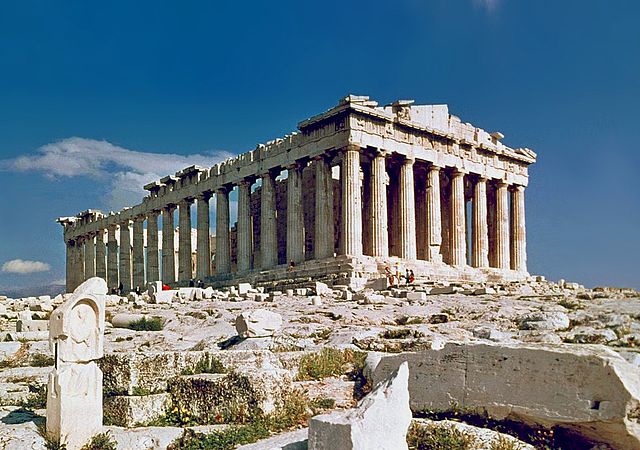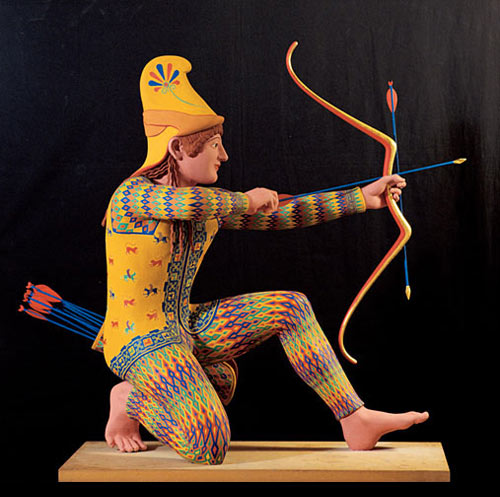Technicolor Dreamcoats

The Parthenon, pictured above, is perhaps the most recognizable relic from ancient Greece. From top to bottom, its white stone exterior reinforces that idea that the art and architecture of the time period was reserved and understated, preferring nothing more than the natural marble undertones to colorize, somewhat, an otherwise black-and-white motif. But as archeologists Vinzenz and Ulrike Brinkmann theorize — with the science to back it up — this is anything but true.
The Brinkmanns’ take? The art of the ancient Greek world featured gaudy, rainbow-colored statues and sculptures, as seen in the portrayal below.

In around 1815, according to the Harvard Gazette, the community of those studying ancient Greece suggested that the almost entirely white relics from ages past were, when created, also painted. But by and large, any serious scientific investigation into that theory laid dormant for over a century. In the 1970s, the Brinkmanns started to change that. For over two decades, the husband and wife has been investigating the colorful history of these creations. As Smithsonian magazine described in 2008, some of the tools they use — “high-intensity lamps, ultraviolet light, cameras, plaster casts and jars of costly powdered minerals” all make the list, and many of them were not available a century and a half earlier. The Harvard Gazette shares further methods, such as “the use of raking light to reveal incised details as well as subtle patterns caused by the uneven weathering of different paints on the stone surface” and “techniques such as X-ray fluorescence and infrared spectroscopy to analyze the types of pigments employed.”
The couple is not simply writing up their findings in a journal of scholarly papers. Rather, they re-created the work of generations ago, using the same paints as would have been found back in ancient Greece. Smithsonian continues: “[Mr. Brinkmann] has dramatized his scholarly findings by creating full-scale plaster or marble copies hand-painted in the same mineral and organic pigments used by the ancients: green from malachite, blue from azurite, yellow and ocher from arsenic compounds, red from cinnabar, black from burned bone and vine.”
Today, the Brinkmanns’ work travels from museum to museum, often next to the original creations from the Greece of centuries past. For example, in early 2008, the exhibit was at the Arthur M. Sackler Museum on the Harvard University campus. A Sackler Museum curator, Susanne Ebbinghaus, adroitly summed up the power of the Brinkmanns’ work: “”The exhibition corrects a popular misconception. What you would have seen when you walked through an ancient city, cemetery, or sanctuary would have been colorful sculpture: painted marble, colorful bronze, gold and ivory cult images. It completely changes our picture of the ancient world.”
Bonus fact: Sculptures predate ancient Greece by millenia. The oldest known sculpture, the Venus of Hohle Fels (Wikipedia entry here), was discovered in Germany in 2008. It is believed to be 35,000 to 40,000 years old.
From the Archives: Tiny Sculptures You Can Write With: Really tiny. But definitely useable as a writing instrument (although it’d ruin the sculpture).
Related: Paint your own turtle in the motif of the Greek art, above.

Leave a comment